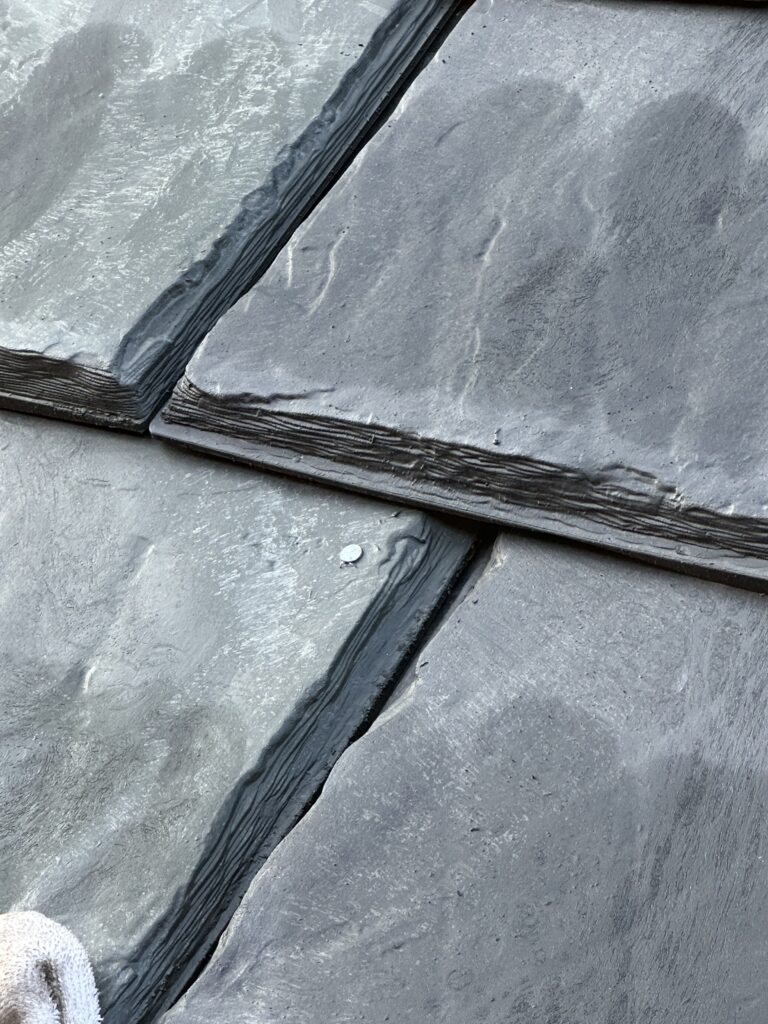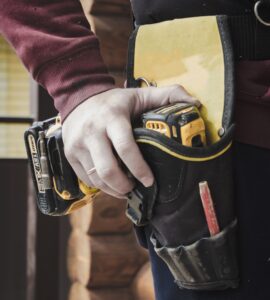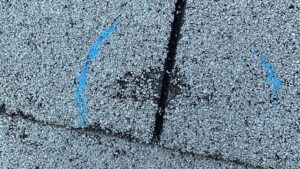We can glean a lot from the old saying, “Imitation is the sincerest form of flattery.”
The phrase rings true with us at Midwest because it frames “imitation” positively. Sure, the “real deal” can’t be paralleled or superseded by the imitation in the authenticity department. However, the statement in question implies there’s an art form to mimicking.
Look no further than a comedian who does imitations. It’s one of the funniest–and most impressive forms–of entertainment around. Sure, they aren’t the real thing, but their imitation is–in and of itself–an attraction that captivates audiences.
Roofing material can be much the same.
Slate roofing is a gorgeous roofing option–highly popular with homeowners, too.
Unfortunately, while authentic and chockful of curb appeal, genuine real-deal slate is costly, pricing many potential buyers out.
Enter imitation slate roofing–a more cost-effective twist on one of the most sought-after, aesthetically gorgeous materials around.
At the end of the day, you get what you pay for. Authentic slate roofing is of superior quality.
Yet, imitation slate roofing more than holds its own as a reliable, top-notch shingle, especially for its price points.
Below, we’ll explore the pros and cons of imitation slate roofing.
What Is Imitation Slate Roofing?
Also known as synthetic or composite slate roofing–which we’ll use interchangeably–imitation slate roofing combines plastic and rubber. The formulation process includes petroleum-based materials being injection-molded into metal forms.
The metal forms mentioned above are cast from genuine slate.
Virgin rubber or plastic is often used by manufacturing brands. Alternatively, other makers incorporate cellulose or dust fibers and recycled plastics or rubbers.
High-quality post-industrial material usually comprises the recycled content in imitation slate roofing. Only sometimes will you find post-consumer recycled materials in such products.
Let’s get into our list of imitation (synthetic or composite) slate roofing pros and cons.

Pro: Synthetic Slate Roofing Stands The Test Of Time
The quarrying process for authentic slates is as intensive as it is expensive.
Additionally, it’s fragile during the cutting phase, challenging to lift due to its weight, and vulnerable to cracking upon installation.
Imitation slate suffers no such problems. It doesn’t crack, peel, warp, or split. It’s also mold and algae-resistant, making it an ideal roofing option for high-moisture regions prone to severe weather.
Furthermore, imitation slate roofing shingles can be individually replaced when damaged, eliminating the need for re-roofing.
Given this high level of durability, it’s not uncommon to see composite slate shingles with 50-year warranties. That’s twice the length of what you’ll get with authentic slate.
Con: Not All Composite Slate Shingles Are Made The Same
A world of difference exists between an imitation that does justice to the original and a cheap knockoff.
Unfortunately, you can’t trust every product on the market. Some imitation slate is well worth the investment. At the same time, some options are cheap, poorly made, and won’t be durable or offer the many other advantages you seek.
Market research is your best bet to combat this issue. The internet is always filled with feedback on almost all products. Or, ask a trusted local roofer what they believe is the top imitation slate roofing shingle on the market.
Pro: Imitation Slate Is A Customizable Roofing Option
Typically, investing in synthetic slate shingles means receiving them tailored to your unique needs as a homeowner.
Do you want a specific size, shape, or color of imitation slate? If so, synthetic slate shingles come with the variety of choices you desire to find the right fit for you.
Plus, you can upgrade your slate shingles with added UV protection, helping defend against sunlight degradation and other external threats.
Pro: Composite Slate Is A Friend Of The Environment
While this doesn’t hold true for every composite slate shingle, many such options on the market complement eco-friendly homes.
Specifically, imitation slate shingles are often made with recyclable materials (e.g., hemp fiber, recycled roofing materials, or post-industrial plastic), promoting sustainability and eco-friendliness.
Con: Some Makes Have Problems With Fire Ratings
You’ll find that many imitation slate shingles are resistant to fire. However, as discussed earlier, not all synthetic products are created equal. Thus, not all composite slate shingles meet the challenge of industry-wide fire ratings.
Homeowners in a more arid area vulnerable to fire damage must be careful when purchasing synthetic slate. Ensure you work alongside a roofing expert who can guide you to the safest products or let you know if synthetic slate is a choice you should even consider.
Seek out imitation slate shingles with a Class-A fire rating–anything less can leave your home at risk.
Con: Imitation Slate Is More Expensive Upfront Than Several Other Shingles
Imitation slate shingles are a middle-ground option. Thus, they aren’t the most expensive option but also not the cheapest.
Undoubtedly, synthetic slate is a more frugally-minded purchase than genuine slate or clay tile. Yet, when stacked up against architectural or asphalt shingles, the price can seem lofty.
There’s no need to be deterred by the middle-ground pricing of imitation slate shingles… especially if you’ve been saving and have the money.
If you work with a roofer–or do your due diligence, otherwise–to find top-notch imitation slate, you’ll have a durable, low-maintenance roofing shingle that costs less over the long haul. You won’t need to splurge on another replacement for decades!

Pro: It’s Easier To Find Roofers To Install Imitation Slate Shingles Than Real Slate
Authentic slate is a significant undertaking for roofers to take on. It’s fragile and heavy and can lead to a host of problems during a given job.
You’ll eventually be able to find someone to install natural slate shingles. It could just be an intensive, frustrating, and costly process.
Alternatively, synthetic slate shingles offer roofers a seamless installation process. They’ll be eager to start the job for you–at a relatively reasonable price–because the project can be completed without much fuss.
Want To Learn More About Imitation Slate Roofing? Contact Midwest
Midwest is your roofing expert, boasting a comprehensive knowledge of the topic in all its facets, including any question about synthetic slate shingles.
Want to learn more about this cost-effective middle-ground shingle? Reach out to Midwest today with your queries. We’ll provide more insights and direct you to the necessary resources to make informed decisions about your roof.





